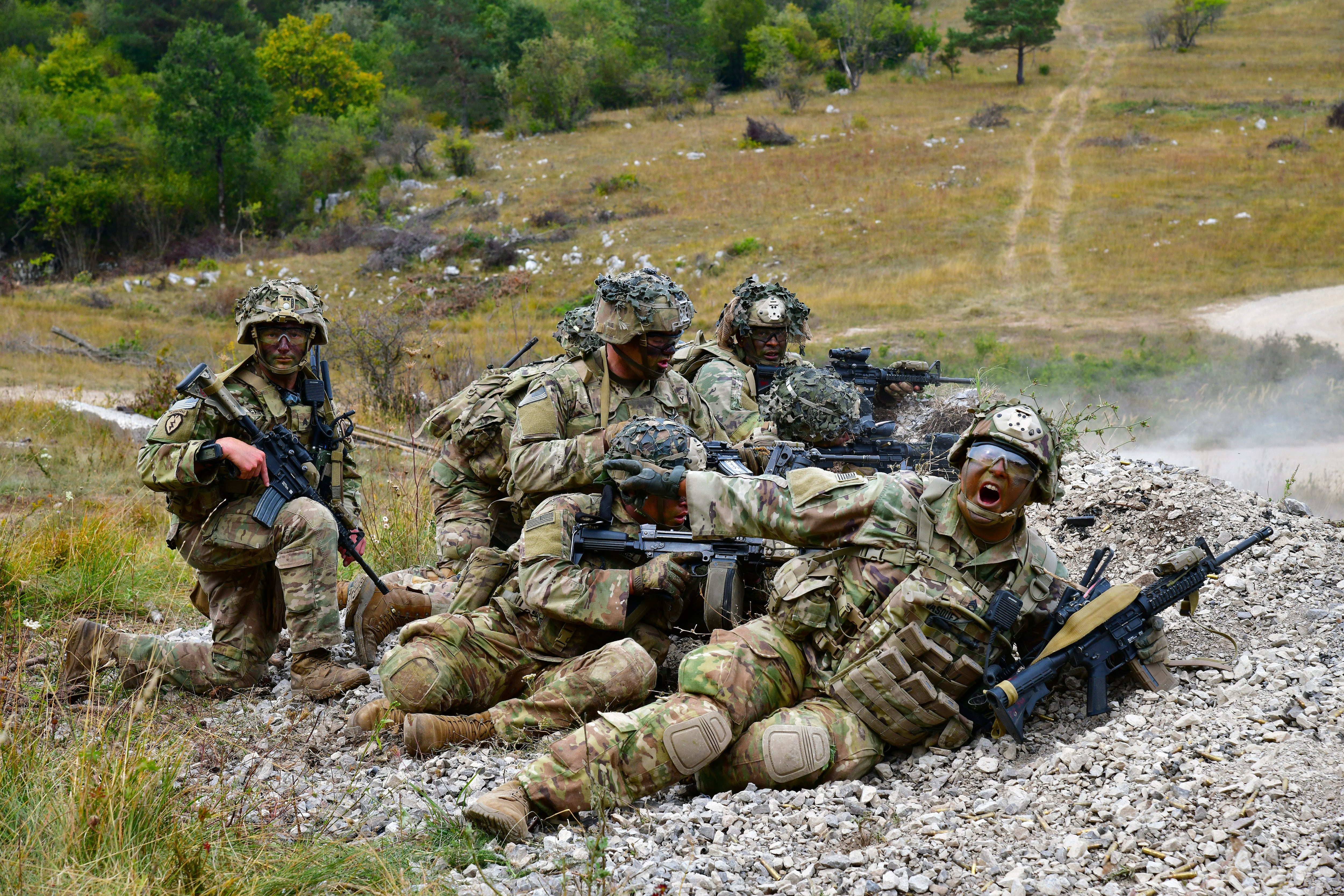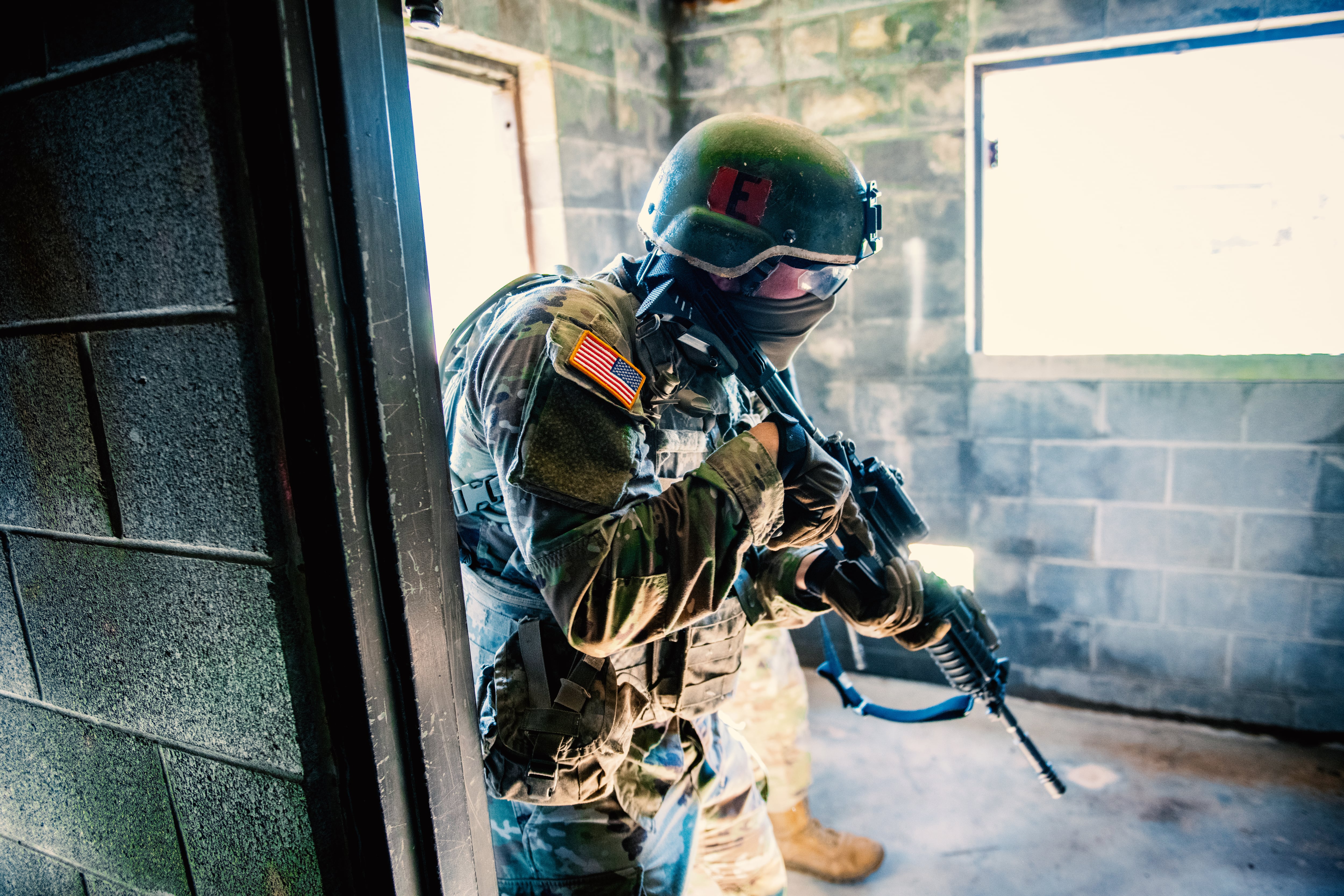WASHINGTON — Brig. Gen. Larry Burris has two jobs: One is commandant of the Infantry School, and the other is the director for the Army’s Soldier Lethality Cross-Functional Team.
The two overlap, but not enough to give him a break.
Burris took enough of a breather to talk with Army Times ahead of the Association of the U.S. Army’s annual conference on what’s happening with today’s grunts and tomorrow’s infantry.
Since this time last year, some structural work at the school has streamlined training and helped staffing get ahead on work with new and returning soldiers.
The Infantry School was the first to extend its One Station Unit Training, and has graduated 8,000 soldiers out of the extended OSUT with a total of 49 training companies. The plan is to grow to 52 in the next six months, Burris said.
Graduation rates have improved from 86 percent to 92 percent when comparing the new 22-week model to the previous 14-week model, and they’ve even seen an increase from an average 240 points to 262 points for the Army Physical Fitness Test.
The average Army Combat Fitness Test score at the end of OSUT is 500 points.
“Outside of maybe the Ranger Regiment, you would be hard-pressed to find a 500 ACFT average in an Army company,” Burris said.
Nearly a quarter of soldiers are shooting at the expert level with the M4 carbine compared to 8 percent under the previous training model.
RELATED

“I think what you’re seeing with the 22 weeks is we’re producing a more fit, more lethal, more capable soldier. I have been an infantry officer for more than 26 years. I would take any four-soldier team out of the new OSUT,” Burris said.
Some the new OSUT-trained soldiers are more proficient in Battle Drill 6 — a room-clearing event — than a lot of specialists out there in the force, he added.
Meanwhile, the school is adding new technology. It has modified enemy test vehicles to look more like adversaries. For example, soldiers are now training against Russian BRDMs — four-wheeled scout vehicles.
The 199th Infantry Brigade is now the leader brigade for the Infantry School, Burris explained. It is handling Basic Officer Leader Course and Infantry Basic Officer Leader Course. They have implemented pilot programs for the Bradley Fighting Vehicle transition course; the first of four pilots was executed in July 2021.
Classes are 25-30 students, and the next pilots are scheduled for February, May and July. They’re currently focused on the platoon and lower levels of formations, Burris explained, adding that Field Manual 3-96 Brigade Combat Team received an update.
The Reconnaissance and Security Leaders Course was reduced from 33 days to 26, eliminating noncritical air operations and restructuring land navigation to ensure it was relevant, he said. The previous course was filling 60 percent of the class seats and graduating half. The new model is filling 100 percent of the seats and graduating 70 percent of students.
They’ve also dropped the Basic Airborne Course from 36 classes per year to 33 to reduce the load on instructors and riggers, Burris noted.
“Riggers here pack more parachutes than the rest of the Defense Department combined,” he said.
To offset the reduction in class numbers, they have increased the class size from 360 to 400.
The Noncommissioned Officer Academy added land navigation as a critical, must-pass event for the Infantry Advanced Leaders Course for staff sergeants. As the Army focuses on China and Russia, soldiers cannot always depend on GPS for navigation, Burris pointed out.
The Airborne Ranger Training Brigade has been using a device called “SHOUT Nano,” a satellite tracker weighing less than 7 ounces, that Reconnaissance and Security Leaders Course students have used during long land navigation exams.
In one instance, the device was used when a student activated a distress beacon for a heat injury, and cadre were able to find the soldier, potentially saving a life, Burris said.
In addition, he added, as part of his work directing the Soldier Lethality CFT, the Enhanced Night Vision Goggle–Binocular device has been fielded to five brigade combat teams; another four BCTS will receive it through next year.
The program will transition from being a directed field requirement, urgent material release to being managed by the Maneuver Capabilities Development and Integration Directorate, he said.
When the 82nd Airborne Division deployed to Kabul during the Afghanistan withdrawal, they took the ENVG-Bs with them. And they’ve been used at two rotations at the Joint Readiness Training Center.
Todd South has written about crime, courts, government and the military for multiple publications since 2004 and was named a 2014 Pulitzer finalist for a co-written project on witness intimidation. Todd is a Marine veteran of the Iraq War.




